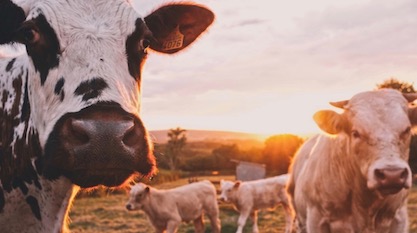 Culture & Ethics
Culture & Ethics
“Social Justice” Inflates to Include Animals


Environmentalism is growing increasingly radical. As I have noted previously, four rivers and two glaciers are now rights-bearing geological features. Yes, it is becoming that nuts.
An article published in Biological Conservation illustrates environmentalism’s metastasizing misanthropy. The authors wholeheartedly embrace the concept of “speciesism,” the noxious notion that treating animals differently from human beings is akin to racism. (That’s crackers. Racism is wrong because it treats equals invidiously as unequals. Speciesism is a nonsensical principle because valuing humans more than animals treats unequals properly as unequals.)
“Just Preservation”
They also argue that prioritizing human needs over the supposed needs or intersts of animals and nature is unjust. From “Just Preservation,” by — you guessed it! — three university professors (citations omitted):
Speciesism in favor of humans subordinates all life to human whims. Subordination of claims based on group membership is certainly not the case in situations concerning other vulnerable moral subjects, such as differently-abled humans or children. The vulnerability of such groups places additional duties on the majority or powerful.
For example, the ethical principles of autonomy, beneficence, non-malfeasance, and justice are commonly recognized in the case of protected classes or vulnerable humans and communities in health-care and medical ethics Attention to vulnerability and capability is a central element of many well-grounded theories of justice. For example, there could very well be a focus on the situation of the least well-off, which would allow for inequalities in outcomes that would benefit, or at least not harm, those individuals. Clearly, non-humans would often fall in this protected class or vulnerable category when faced with human exploitation…
Our conceptualization of an adequately horizontal rather than hierarchical approach would position human well-being along side, not in front or before, non-human well-being. Hence, it would argue for extending justice to non-human (in addition to human) claims if preservation is to be truly non-anthropocentric.
Translation: Our duties to animals — which human exceptionalism certainly accepts, but not as being equal with our duties to human beings — requires that their “interests” be given equal consideration with ours in every conflict situation.
A Prescription for Gridlock
Talk about a prescription for absolute gridlock in human enterprise! Imagine a farmer wants to clear a section of forest to create a field for planting. All the birds and the bees and the flowers and the trees would have to be given equal consideration to that of the farmer to earn a living and humans to consume the products of his labors. Environmentalist lawyers would strike and initiate years-long litigation to sort out the equal rights of all affected life forms and geological features. Knowing that, what rational farmer would try to expand his fields?
It gets worse. The authors want to tie conservation principles into a Gordian knot by also granting not-yet-living humans and animals formal legal representation in courts!
We recommend the equitable inclusion of currently unrepresented interests, because adjudication between parties representing only current human interests would continue to disenfranchise non-humans, youth and future generations of all life.
Who would represent these as yet unborn or unhatched lives? Why radicals like them, of course.
The authors conclude:
The remedies we propose will not come easily. The usual complaints of infeasibility and cost will surface [ya think!?], but we suggest that higher hurdles have been overcome by nations abolishing slavery, adjudicating the relationship of seceding states, weighing equal representation regardless of identity.
The moral principles of non-anthropocentrism and intergenerational equity demand the same moral convictions as those pivotal issues for free societies and no less an investment of current resources. Non-humans and future generations of human, let alone all, life, so vastly outnumber current human adults that we are advocating for the true grass-roots that spring to life each second worldwide.
Read the whole thing. It will make your eyes cross.
A Basis for Radicalism
Why do I bring this article to your attention? Because academic articles often become the bases for radical public policies and “innovative” court rulings.
For example, a radical animal-rights group could one day bring a lawsuit insisting that current and future born animals’ “rights” are being infringed by some enterprising human activity. Rather than toss the case out of court, the judge might conclude that the matter is one of “first impression,” and that she needs to consider the “learned wisdom” of “the experts” on how to proceed. Voila, articles such as this become part of the court’s consideration.
Ditto in the legislative process, where authors such as these might be called upon to draft legislation and testify before committees on its behalf. Even more likely, their ideas will be taken into account the next time radical environmentalists control our regulatory agencies.
One simple action can head most of this baloney off at the pass: Enact federal and state laws that simply state no non-human animal or aspect of nature standing in any court, nor do they possess enforceable rights.
Photo credit: Stijn te Strake via Unsplash.
Cross-posted at The Corner.
